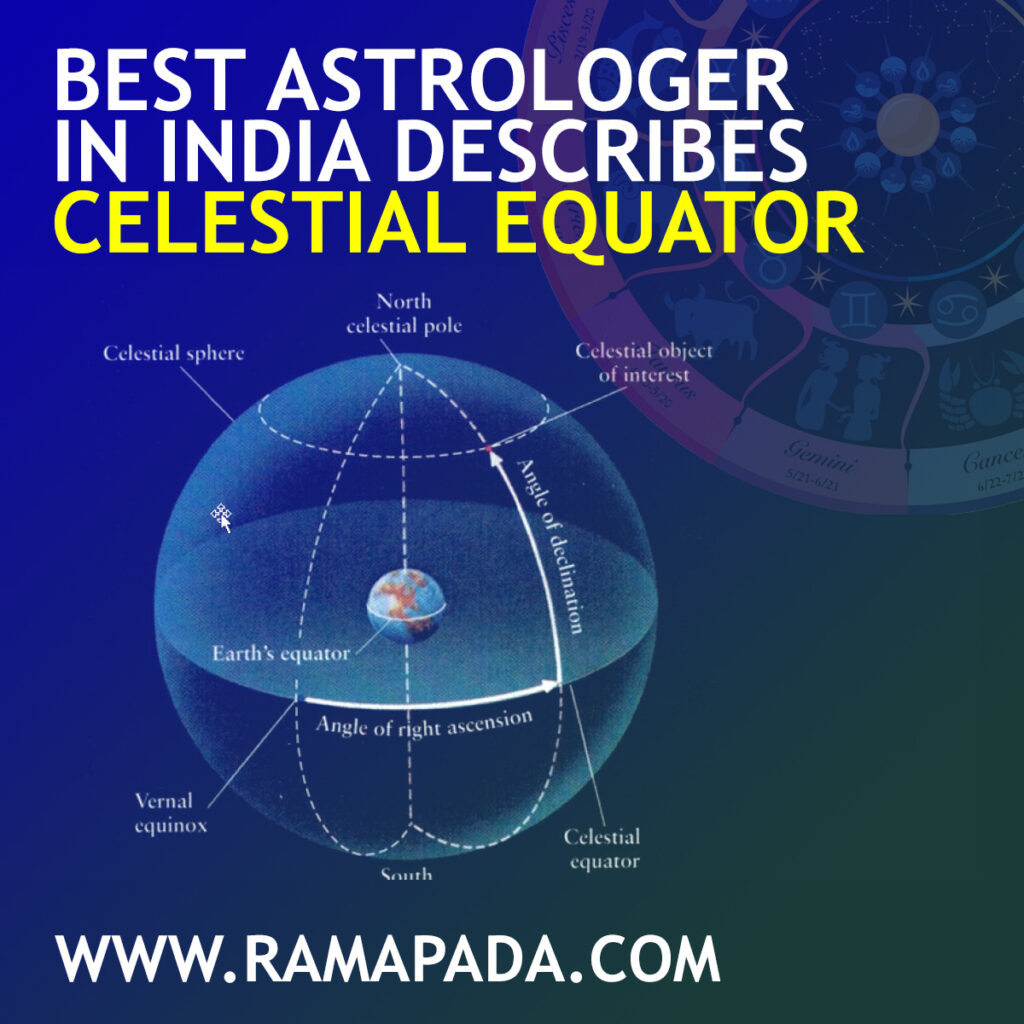According to the best astrologer in India, imagine the night sky as a canvas, vast and ever-changing. Upon it, constellations dance, planets pirouettes, and stars wink like scattered diamonds. But amidst this cosmic ballet lies a hidden structure, a celestial equator that plays a pivotal role in the language of astrology.
A Projection of the Earth:
The celestial equator is not a physical entity but an imaginary line, projected from Earth’s equator onto the celestial sphere. Think of it as a giant, celestial hula hoop circling the Earth, dividing the sky into a northern and southern hemisphere. This imaginary line is vital in mapping the heavens, providing a reference point for celestial coordinates.
Equinoxes and Solutions:
The celestial equator’s importance is amplified by its connection to the Earth’s tilt and the Sun’s apparent path. The sun crosses the celestial equator twice a year, marking the equinoxes—spring and autumn—when day and night are roughly equal in length. At the solstices, the sun reaches its maximum distance north or south of the celestial equator, creating the longest and shortest days of the year, as said by Ramapada Acharjee, the best astrologer in India.
Zodiacal Constellations:
The celestial equator also intersects the ecliptic, the Sun’s apparent path through the sky. This intersection forms twelve “crossroads,” each aligned with a specific constellation of the zodiac. These constellations, like celestial mile markers, provide a framework for understanding planetary movements and their astrological implications.
In the astrological chart:
In natal astrology, the celestial equator is marked on birth charts as a horizontal line. It divides the chart into two hemispheres, influencing the interpretation of planetary placements. When planets appear above the Great Circle, they’re considered “above the horizon,” meaning they’re openly visible and their influence becomes more outwardly expressed. Those below the equator are “below the horizon,” indicating internalization, introspection, and hidden potential.
Beyond Basic Interpretation:
Understanding the celestial equator is not just about technical knowledge; it’s about appreciating its deeper symbolism. The equator represents the balance between day and night, light and darkness, the conscious and the unconscious. Planets interacting with the equator, whether transiting or occupying natal placements, highlight areas where these polarities come into play, urging us to seek integration and harmony.
Unlocking the Secrets
By delving into the celestial equator’s significance, astrologers gain valuable insights into individual lives and the cosmic dance of the planets. It’s a tool that helps us understand our internal and external landscapes, navigate the ebb and flow of life, and find meaning in the seemingly random movements of the heavens.
Best astrologer in India says to remember the celestial equator, the unseen thread weaving the tapestry of the sky. Listen to the silent whispers of your sun sign, a celestial map revealing the rhythm and story woven into the very fabric of the vast universe.

